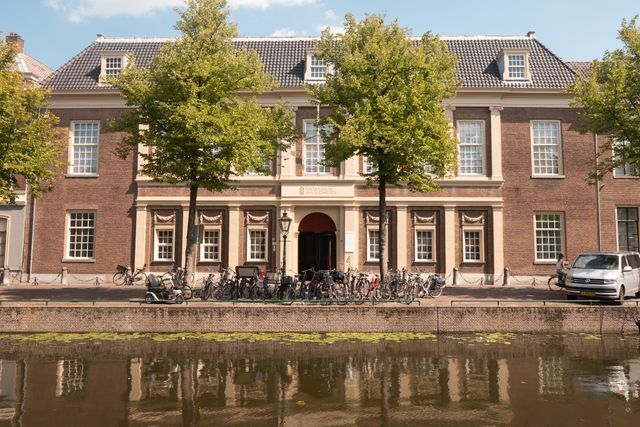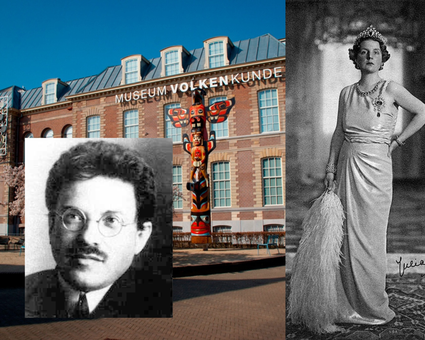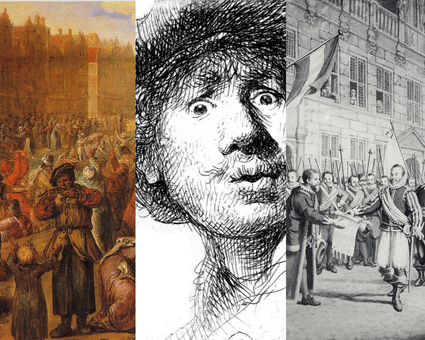Chapter III
Leiden History 101
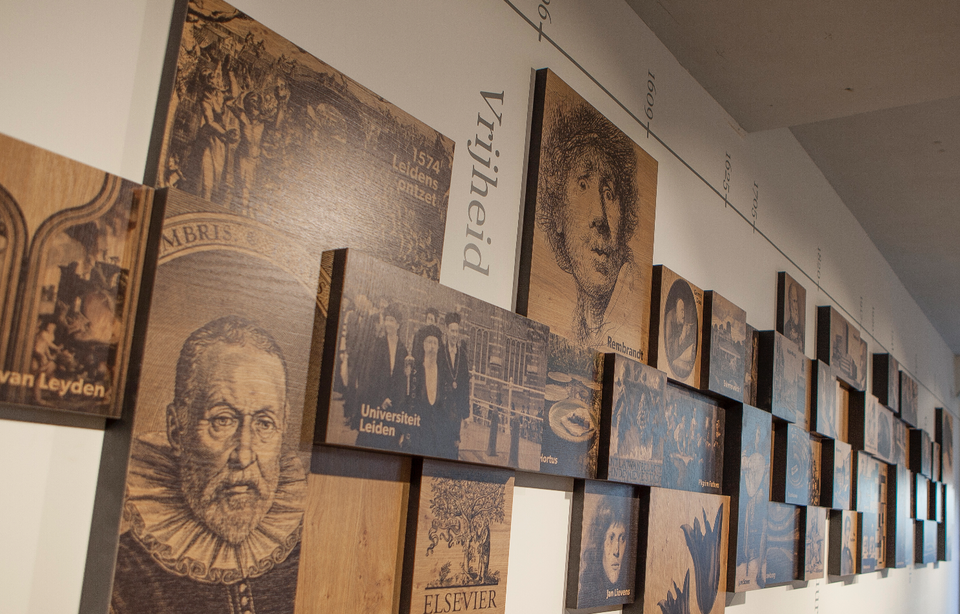
Introduction - The Industrial Revolution and a Museum on Evolution
The 19th and 20th centuries came with many outstanding additions to Dutch literature, and discoveries that enlarged the collections of many museums in Leiden such as Naturalis and De Rijksmuseum van Oudheden.
One of the reasons this chapter includes so many writers is because the first industrial revolution (1765 - onwards) made way for the industrial printing press, making it possible to produce thousands of copies of written texts and images and distribute them quickly and cheaply to a larger slice of the population.
Of course, because printing became quicker and cheaper than before, the entry-level to becoming a writer lowered significantly. The Dutch middle- and lower-class could now also afford more and more books, giving rise to authors like Nicolaas Beets, Piet Paaltjens, and J.J. Cremer with his book about Dutch factory children.
Kiek
The Dutch word ‘’Kiek’’ or ‘’kiekje’’ is named after the Leiden photographer Israël David Kiek.
Originally the word meant group photo, but now it has become synonymous with an amateur photo or quick shot.
The photo on the side shows a fraternity or fellowship of LSV Minerva "Humbold’’ (Leiden Student Association).
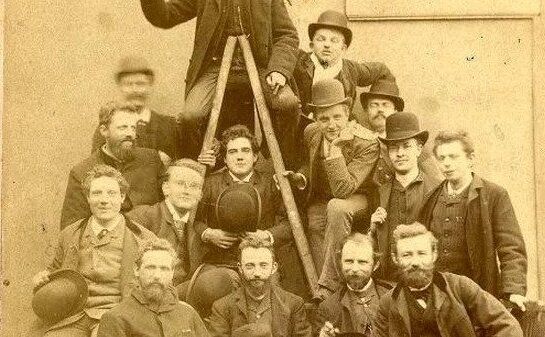
Klikspaan
Johannes Kneppelhout (1814-1885) wrote his ‘’Studentenschetsen’’ (Student Sketches) under the pseudonym Klikspaan (Snitch) around 1839. He was one of many student authors, and made a unique, and authentic Leiden contribution to Dutch literature.
The young students around Klikspaan tended to write romantic poetry. They became known country-wide when they switched to more realistic and humorous written works. Kneppelhout/Klikspaan became famous for his sketches of Leiden students - and sometimes merciless descriptions of the city and its inhabitants.
Kneppelhout glorified student life and opposed the bourgeois society, of which, ironically, he was a part of. He lived with his mother but was extremely wealthy and used his fortune to support other artists and education.

Thorbecke
The statesman Johan Rudolf Thorbecke (1798-1872) was closely involved in the issue of the Huiszittenhuis.
In the mid-19th century, the Huiszittenhuis on the Oude Rijn was an important institution for helping the poor. Half of the board members were chosen by the state, and the other half by the church - but it was the deacons who managed the government subsidies for the poor.
As a city councillor, Thorbecke was a member of the committee in 1848 and concluded that the church administrators (deacons) managed the budget inefficiently, claiming they had no place in the Huiszittenhuis.
Thorbecke had studied in Leiden and became a professor of law there in 1831. On March 17, 1848, he was appointed to a committee to revise the constitution, which was completed on April 11 and signed by the king.
A significant moment in Dutch history, since it meant that the Netherlands had become a constitutional monarchy with which power laid with an elected parliament.

Minerva
LSV Minerva (Leiden Student Association Minerva) is a traditional, mixed student association, and the oldest one in Leiden.
It was created on January 1, 1974, after Leidsch Studenten 'Corps Virtus Concordia Fides' (1839) and the 'Association for Female Students in Leiden' (1900) merged into one.
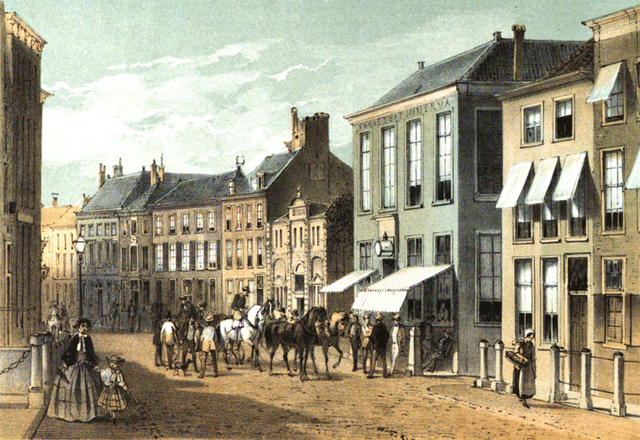
Camera Obscura
Nicolaas Beets (1814 – 1903) wrote his famous Camera Obscura in 1839 - during his student years in Leiden under the pseudonym: Hildebrand. With a series of sketches and short stories, he provided a detailed and humorous depiction of the bourgeois life of those days.
The Camera Obscura became Beets' most famous literary work. The book had many reprints and remained immensely popular well into the 20th century.
A stone in Breestraat at number 114 is a tribute to the well-known student author Nicolaas Beets.
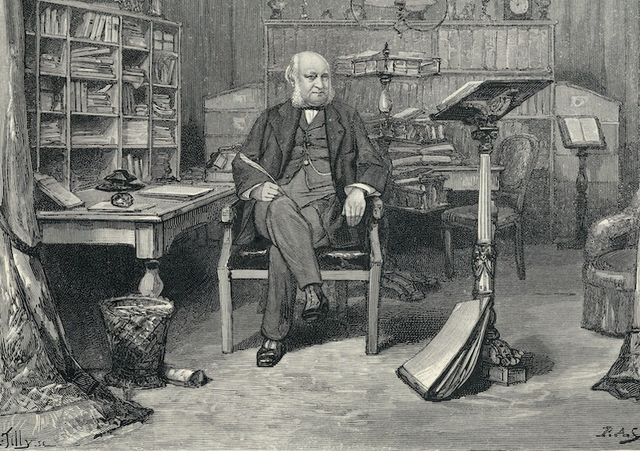
Piet Paaltjens
Piet Paaltjens was the pseudonym of the Dutch poet and preacher François Haverschmidt. Haverschmidt studied theology in Leiden while living at Hogewoerd 63.
His most famous collection is ‘’Snikken en grimlachjes’’ (Sobbing and Smiles) from 1867, which portrays his life as a student in a bitter-ironic way and elements of cynical romanticism.
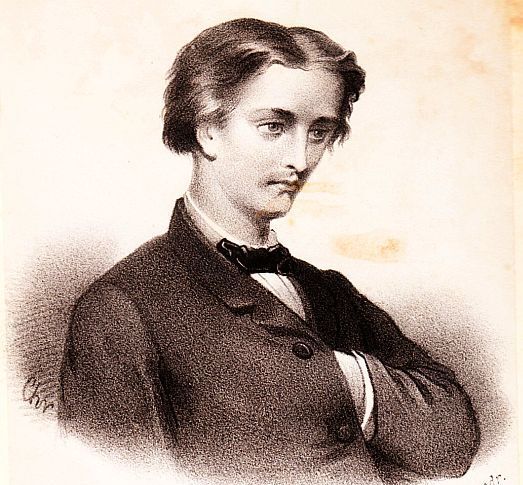
Lorentz
Hendrik Antoon Lorentz (1853 – 1928) was one of the greatest Dutch physicists and winner of the Nobel Prize in Physics in 1902. He received the Nobel Prize together with Dutch physicist, Pieter Zeeman, for their research on the influence of magnetism on spectral lines: the Zeeman effect.
Lorentz was also appointed as the first professor of theoretical physics in Leiden in 1877.
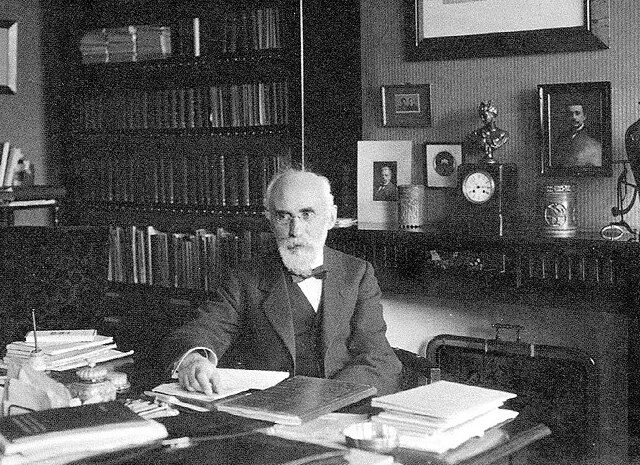
Kinderwetje van Houten
The Leiden textile industry is often used as an example of excessive child labour as a consequence of the industrial revolution around 1860.
In 1863, the popular writer J.J. Cremer published his book: ‘’Fabriekskinderen – Een bede doch niet om geld’’ (Factory Children – A Request, but not for Money), with a Leiden wool-spinning Mill as a shocking example.
A number of Leiden manufacturers immediately responded with a petition requesting proper legislation. Not long after, this led to the Van Houten Child Labor Law of 1874 which prohibited children younger than twelve from working.
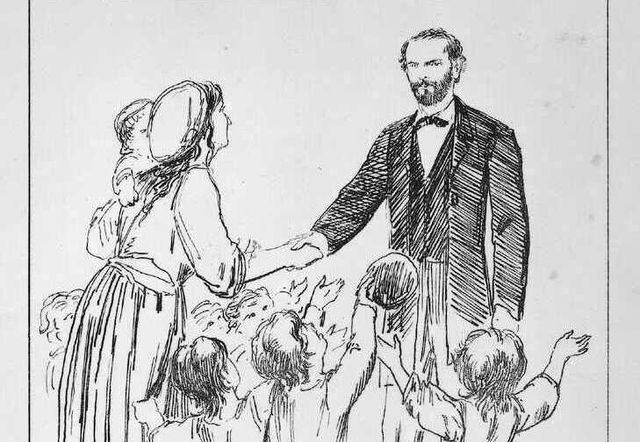
Leiden Continuum
Leiden, Key to Discovery, where the sum of science, culture, and freedom of thought equates to the rise and success of icons. From Rembrandt van Rijn to Armin van Buuren, from the Pilgrim Fathers to the T.rex, and from the tulip to Leiden Bio Science Park.
These figures, inventions, discoveries, and events, form part of Leiden's underlying DNA, which can be explored through the Leiden Continuum (Het Leids Continuüm).
